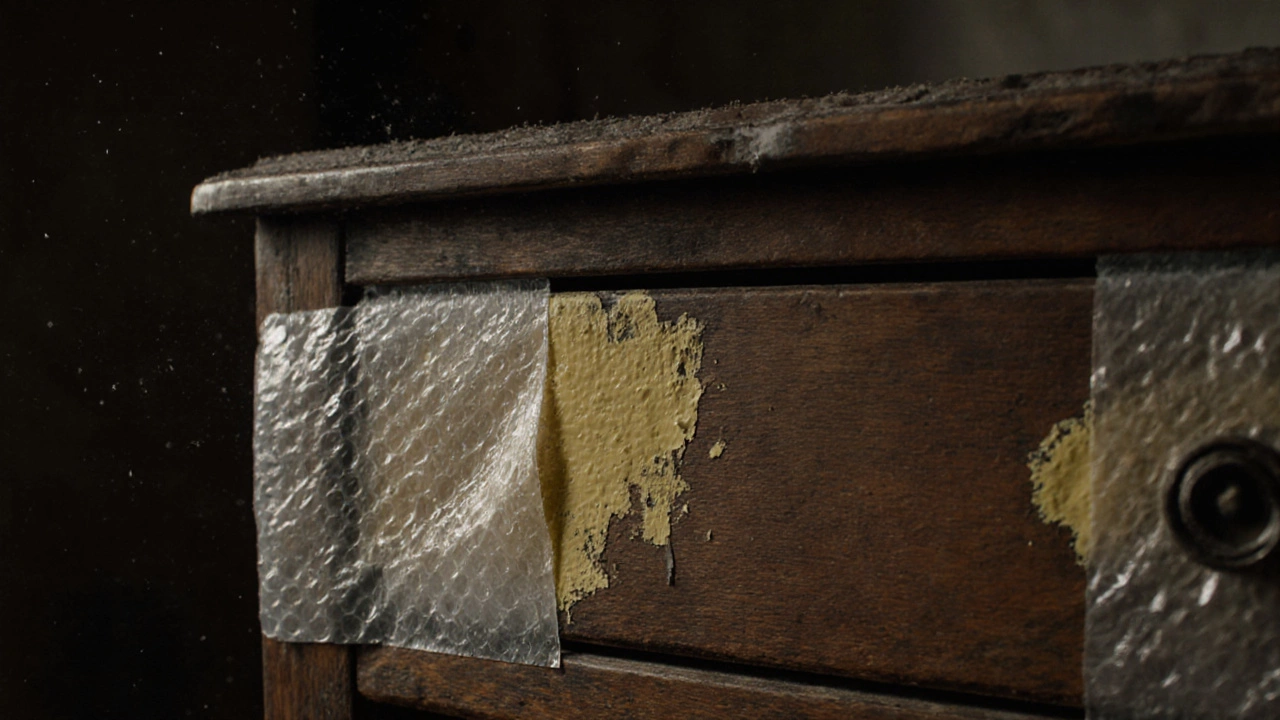When you’re storing or moving furniture, bubble wrap storage, a protective layer of air-filled plastic bubbles used to cushion fragile items during transport or storage. Also known as air cushion wrap, it’s one of the most common tools for keeping wood, glass, and metal surfaces from scuffs, dents, and moisture damage. But using bubble wrap isn’t just about wrapping everything you own—it’s about knowing what to wrap, how tightly, and where to skip it entirely.
Many people think bubble wrap is a one-size-fits-all solution, but that’s where things go wrong. For example, wrapping a solid oak dining table in bubble wrap and sealing it in a damp basement? That traps moisture and invites mold. On the other hand, wrapping a glass-top coffee table with two layers of bubble wrap before storing it in a dry attic? That’s smart. The key is matching the material to the environment. Bubble wrap works best as a barrier against scratches and impacts, not as a moisture shield. If you’re storing furniture in a UK garage or shed, you need breathable fabric over the bubble wrap, or better yet, a cotton sheet underneath to let air move. Think of bubble wrap as your first line of defense, not your whole system.
Related to this are other storage essentials like furniture protection, the practice of shielding furniture from physical, environmental, and biological damage during storage or transport, which includes using moving blankets, silicone pads under legs, and desiccant packs. Then there’s packing materials, the range of items used to secure and cushion objects during handling, including foam, cardboard, and plastic wraps. Bubble wrap fits right in here—but it’s not always the best choice. For example, if you’re storing a recliner, you don’t need to wrap the fabric in bubble wrap. You need to cover it with a cotton slipcover and elevate it off the floor. For a glass shelf? Double-layer bubble wrap, then secure it with tape that won’t leave residue. For metal legs? A thin foam sleeve prevents rust spots from touching concrete.
What you’ll find in the posts below are real, tested ways people have used bubble wrap storage—along with what didn’t work. You’ll see how to protect wood furniture from damp without trapping it, how to store a TV stand without scratching the finish, and why some people swear by bubble wrap while others avoid it entirely. There’s no magic formula, but there are clear patterns: dry storage + breathable covers + smart wrapping = fewer regrets. Whether you’re packing up a cottage, moving into a new flat, or just clearing out the garage, the right approach saves time, money, and stress.

Bubble wrap is handy for moving, but it's not safe for long-term storage. Learn why it can damage antiques, electronics, and fabrics over time-and what materials to use instead.
More